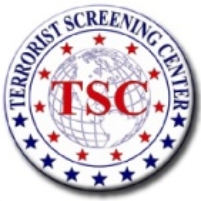Many of 500 Americans on No-Fly List Don’t Know Why
Sunday, April 15, 2012

What do Raymond Knaeble, Ayman Latif, Abe Mashal and Steven Washburn have in common, aside from being veterans of the U.S. armed forces? They all have no idea why they are on the government’s secret “No-Fly List”—and they’re suing the government over it. As its name suggests, the purpose of the 20,000-name list, created after September 11, 2001, is to bar those on the list from flying in or above the U.S. because the government believes them to be a terrorism threat. The list includes about 500 U.S. citizens. They are considered by the government, in the words of court documents, “too dangerous to fly, but too harmless to arrest.”
The no-fly list is one of two sub-lists of the much larger terrorist watchlist, which includes about 500,000 people around the world thought to be associated with terrorism. Both lists are maintained by the FBI’s Terrorist Screening Center (TSC) which, based on input from other federal law enforcement agencies, adds to the list the names of those whom it believes it have a “reasonable suspicion” are associated with terrorism.
It is that “reasonable suspicion” that has led Knaeble, Latif and 13 others to join forces with the ACLU in a lawsuit filed in Portland, Oregon, in which they allege they have not been told why they are on the list or given a meaningful chance to clear their names. They argue that their rights to due process, as protected by the Fifth Amendment to the Constitution, have been violated and are continuing to be violated, because the appeals process is too secretive. The government will not tell a traveler that they actually are on the list, and no reasons or evidence are given.
Travelers file appeals not with TSC but with the Department of Homeland Security Traveler Redress Inquiry Program, which does not even tell appellants whether their appeal succeeded or failed, but gives them a redress number. Travelers can find out whether they are cleared to fly by buying a new ticket, entering the redress number in the reservation and showing up at the airport to try to board.
Although the government has argued that flying is not a constitutional right, the Supreme Court has recognized a constitutional right to travel since at least 1823, in the case of Corfield v. Coryell.
-Matt Bewig
To Learn More:
Case of Tigard man, grounded by no-fly list, offers glimpse into secretive airport security screening (by Helen Jung, The Oregonian)
U.S. Citizen Aid Volunteer Blocked from Reentry after Trip to Libya (by Matt Bewig and David Wallechinsky, AllGov)
Three Veterans Stranded Abroad on No-Fly List (by David Wallechinsky and Noel Brinkerhoff, AllGov)
- Top Stories
- Unusual News
- Where is the Money Going?
- Controversies
- U.S. and the World
- Appointments and Resignations
- Latest News
- Can Biden Murder Trump and Get Away With it?
- Electoral Advice for the Democratic and Republican Parties
- U.S. Ambassador to Greece: Who is George Tsunis?
- Henry Kissinger: A Pre-Obituary
- U.S. Ambassador to Belize: Who is Michelle Kwan?






Comments